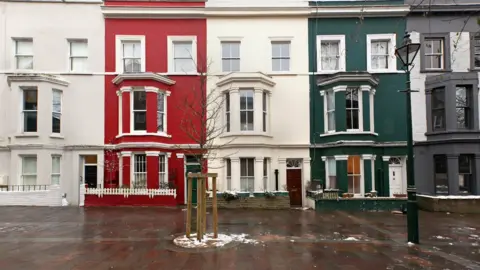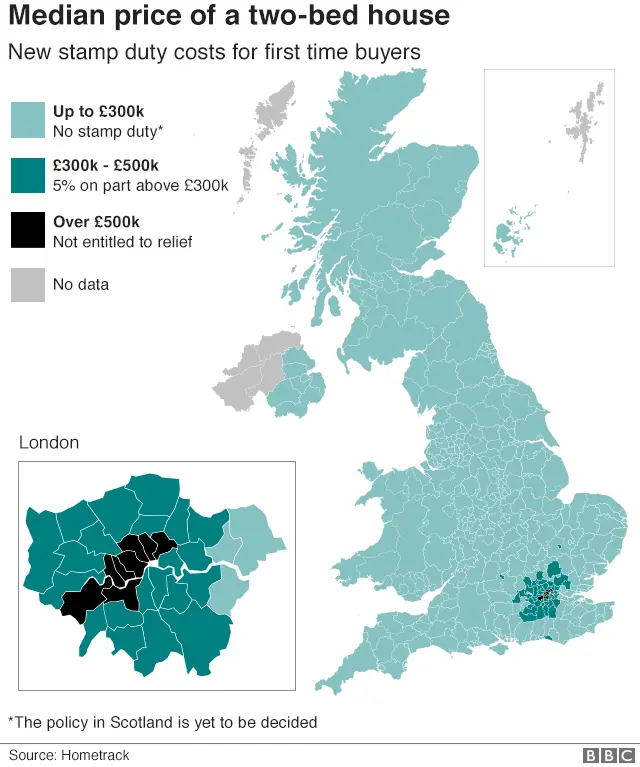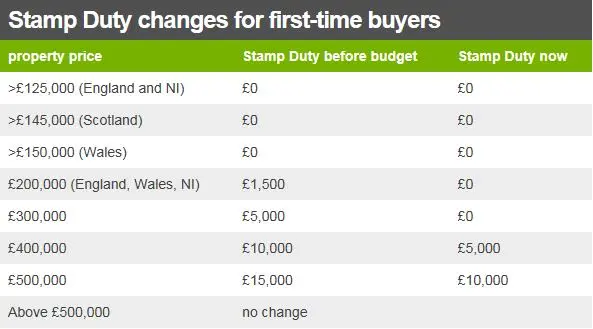Budget 2017: What does the stamp duty change mean?
 Thinkstock
ThinkstockStamp duty will be abolished immediately for first-time buyers buying a home of up to £300,000, Chancellor Philip Hammond has said.
For properties costing up to £500,000, no stamp duty will be paid on the first £300,000.
Mr Hammond said this meant 95% of first-time buyers would see stamp duty cut, while 80% would pay none at all.
The change will apply in England and Northern Ireland, and in Wales up until the end of March, but not in Scotland.
Scotland has an independent system of land tax. Stamp duty will be devolved to Wales from March 2018.
In the rest of the UK stamp duty is paid on all residential properties worth more than £125,000. The duty is levied at a staggered rate above that threshold, starting at 2% but increasing in line with the value of the property being bought.

The Office for Budget Responsibility (OBR) said the main beneficiaries would be existing homeowners, rather than first-time buyers, because it expects all house prices to rise by 0.3% within a year as a result of the change.
It also estimates that it will result in only an additional 3,500 first-time buyer purchases.
However, the chancellor insisted that young people will benefit.
"This is our plan to deliver on the pledge we have made to the next generation that the dream of home ownership will become a reality in this country once again," Mr Hammond said.
The policy will cost the Treasury £3.2bn over the next five years.
 Getty Images
Getty ImagesAndrew Norfolk, who is saving to buy a property in Cambridge, said the Stamp Duty change was a start, but more could be done.
"As a 26-year-old, working in a well-paid professional job, I find it ridiculous how difficult it is to get on the ladder without help from mum and dad.
"If I'm struggling - and I consider my position more fortunate than most - how on earth do most people ever stand a chance at home ownership?"
Regional differences
Estate agent Savills estimates that the average stamp duty bill for first-time buyers is about £2,700.
But in many parts of the country, first-time buyers will see no - or very little - saving at all.
In the North of England, the average Stamp Duty charge is just £11.82, according to analysts at AJ Bell.
This is because average house prices in the region are only just above the English Stamp Duty threshold, at £125,000.
However, buyers who spend £500,000 could save up to £5,000.
"The stamp duty relief for first time buyers announced in today's budget will be a welcome boost to people purchasing their first home but the impact will be felt disproportionately in the South of England," said Tom Selby, senior analyst at AJ Bell.

'Cliff edge'
For all first-time buyers, the deposit is a bigger up-front cost than Stamp Duty. The average deposit across the UK is £32,899, according to the Halifax, compared to the average Stamp Duty charge of £1,654.What does the stamp duty change mean?
Tom Kibasi, of the centre-left think tank the Institute of Public Policy Research (IPPR), said: "Unaffordable house prices are the problem, not Stamp Duty. For most young people, the stamp duty cut will make little difference. But it will help the beneficiaries of the bank of mum and dad."
The Office for Budget Responsibility (OBR) pointed out a "cliff edge" situation in high-priced areas.
A first-time buyer paying £500,001 for a home will pay £5,000 more in Stamp Duty than someone paying £500,000, it said.
Other commentators agreed with the OBR that prices will rise as a result.
"Pouring financial fuel on house prices will only result in even higher house prices, just as Help to Buy has done and as previous Stamp Duty holidays have," said property expert Henry Pryor.
